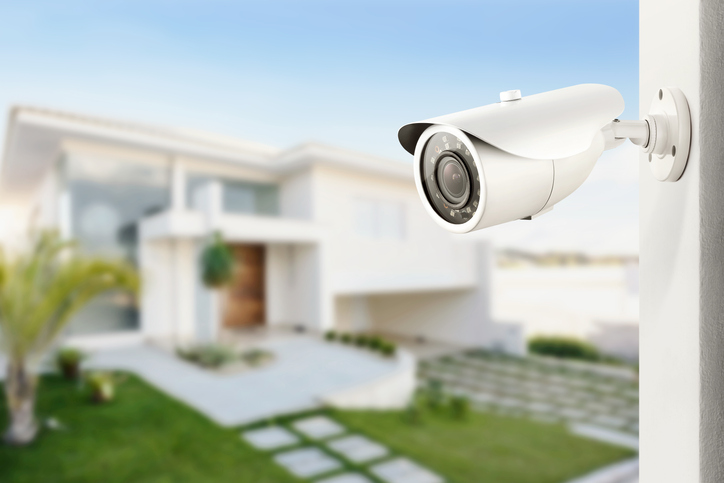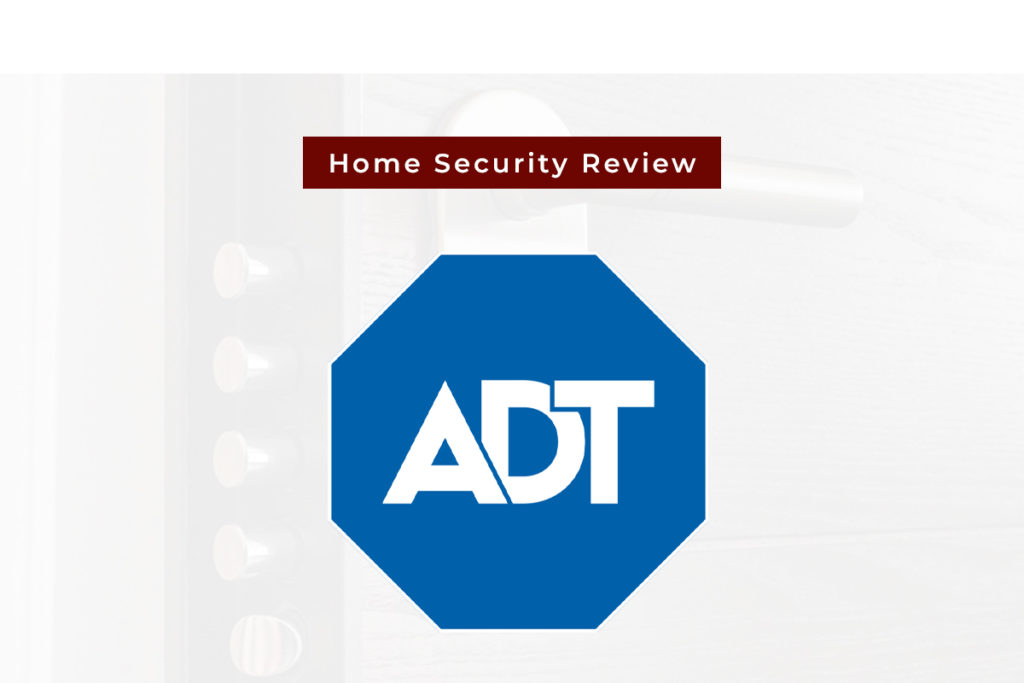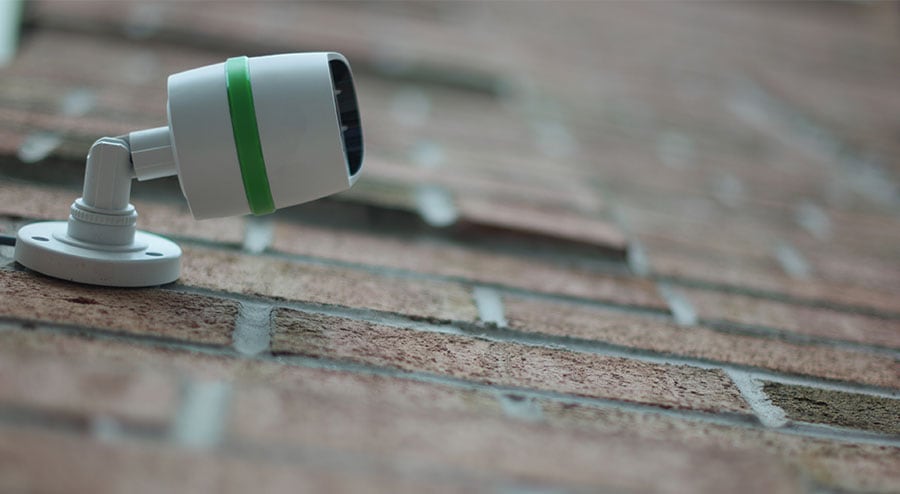Home security systems are an essential line of defense against potential threats and intrusions, providing homeowners with peace of mind and a sense of security. However, to ensure their effectiveness, regular maintenance is crucial. Just like any other technology, home security systems require attention and care to function optimally. From testing sensors and alarms to troubleshooting common issues and updating software, proper maintenance plays a key role in keeping your system in top shape. In this guide, we will explore the importance of home security system maintenance and provide practical tips to help you maintain a reliable and efficient security setup, ensuring that your home and loved ones remain protected at all times.

Understanding Home Security System Components
Home security systems are comprehensive setups designed to safeguard homes and their occupants from potential threats and intrusions. These systems consist of a network of interconnected devices and sensors strategically placed throughout the property to monitor and detect any unusual activity. The primary objective of a home security system is to alert homeowners and, if applicable, professional monitoring services, about potential security breaches, including burglaries, fires, and environmental hazards.
At the core of a home security system is the control panel, acting as the central hub to manage and coordinate all connected devices. It communicates with various components, such as sensors, alarms, cameras, and keypad/ touchpad, to maintain seamless operation. Sensors play a crucial role in detecting changes in the environment, including movement, door/window openings, and temperature fluctuations, and trigger the appropriate response, such as sounding an alarm or activating surveillance cameras.
Cameras are an essential part of a home security system, providing video surveillance to capture footage of the surroundings. This visual data can aid in identifying potential intruders or validating alarms triggered by other sensors. Keypads or touchpads allow users to interact with the system, arming or disarming it, and entering security codes for access.
To enhance the security system’s effectiveness, motion detectors are employed to sense movement within designated areas, while door and window contacts trigger alarms if unauthorized access is attempted. In some cases, homeowners opt for professional monitoring services, where a monitoring center is notified during emergencies, enabling a timely response to critical situations.
According to a report by the Electronic Security Association, 83% of burglars admitted that they specifically look for signs of a security system before attempting a break-in. A well-maintained security system, including visible alarms, surveillance cameras, and signage, sends a clear message to potential intruders that the property is protected and monitored.
Essential Components Requiring Regular Maintenance
To ensure the optimal functioning of a home security system, several key components necessitate regular maintenance. Regular upkeep not only prevents potential malfunctions but also extends the longevity of the entire system. Among the crucial components that require routine attention are sensors, alarms, cameras, control panels, keypads, batteries, and wiring connections.
Sensors play a pivotal role in detecting any unusual activity within the monitored areas of the home. Regularly checking these motion detectors, door/window contacts, and other sensors is essential to confirm their proper functioning. Cleaning them periodically helps to eliminate dust and debris that might affect their sensitivity and accuracy.
Alarms and sirens serve as the first line of defense, alerting occupants and deterring intruders when triggered. Regular testing of these audio and visual alarms ensures they remain loud, clear, and responsive when needed most. Additionally, it is essential to replace batteries in wireless sirens to avoid unexpected system downtime.
Cameras are the eyes of a home security system, capturing vital visual evidence. Keeping the camera lenses clean is crucial for maintaining clear and high-quality footage. Regularly inspecting the cameras and adjusting their positioning, if necessary, ensures optimal coverage of critical areas around the property.
The control panel and keypad are the central interfaces through which users interact with the security system. Verifying their proper functionality, absence of error messages, and cleanliness is essential for efficient system management.
Checking the batteries in all system devices is a fundamental maintenance task. Ensuring that all batteries are functioning correctly and replacing them when required is essential for continuous and reliable operation. Many services offer backup batteries and chargers, so that you’ll always have a charged set ready. This is a great investment because, in some cases, it may take several hours to charge your batteries. By having backup batteries you ensure that your system is never down.
Inspecting the system’s wiring and connections is crucial for both wired and wireless setups. Addressing any signs of wear, damage, or loose connections promptly helps maintain system integrity and prevents potential malfunctions.
Differences Between Maintaining Wired And Wireless Systems
Wired systems utilize physical cables to connect all the system components to the central control panel. This hardwired setup offers a robust and reliable connection, as it is not susceptible to potential wireless signal interference. The stability of wired systems makes them an excellent choice for homeowners seeking maximum dependability. However, the installation process can be more complex and may require professional assistance, especially in larger properties.
On the other hand, wireless systems rely on radio frequency signals to communicate between the various components and the control panel. This wireless setup offers greater flexibility and ease of installation, making it an attractive choice for those who prefer a DIY approach or for rental properties where permanent installations are not feasible. Wireless systems are also less invasive during installation, minimizing the need for drilling and running cables.
Maintenance considerations differ between the two systems as well. For wired systems, regular checks involve ensuring the integrity of the wiring, looking for signs of damage, cuts, or loose connections. Addressing any wiring issues promptly is essential to maintain the system’s stability and functionality.
Wireless systems require regular battery checks in all wireless devices, including sensors, cameras, and keypads. Ensuring that batteries are in good condition and promptly replacing depleted ones is vital to avoid interruptions in system performance.
Wireless systems may be more susceptible to signal interference from other wireless devices or even environmental factors, like thick walls or metal barriers. Monitoring signal strength and addressing any interference issues promptly is crucial for maintaining optimal communication between the components and the control panel.
Performing Routine Home Security System Maintenance
By adhering to a regular maintenance schedule and conducting these checks, you can proactively address minor issues before they escalate, ensuring that your home security system remains effective and dependable in safeguarding your home and loved ones.
Frequency Of Maintenance Tasks
Regular maintenance is essential to keep your home security system operating at its best and providing reliable protection. To ensure the system’s optimal performance, it is crucial to establish a maintenance schedule and conduct routine checks on its various components. While specific maintenance requirements may vary based on your system’s make and model, here are some general guidelines for the frequency of maintenance tasks:
Monthly Checks
During your monthly maintenance routine, test the functionality of all sensors, including motion detectors, door/window contacts, and smoke detectors. Verify that they trigger the appropriate response, such as activating alarms or alerting the monitoring service if you have one. Additionally, inspect the control panel and keypad for any error messages or signs of malfunction. Regularly check the condition of the batteries in all wireless devices and replace them as needed to ensure uninterrupted functionality. Cleaning camera lenses to maintain clear video footage is also essential during this monthly check.
Quarterly Checks
On a quarterly basis, it is recommended to test the audio and visual alarms to ensure they are loud and clear. Review the system’s user manual and perform any recommended software or firmware updates to keep the system up to date. During this time, it is also beneficial to inspect the exterior of the property for any potential security vulnerabilities, such as broken locks or damaged windows, that may compromise the system’s effectiveness.
Annual Maintenance
Conducting a thorough annual inspection of the entire system is crucial to ensure its long-term functionality. This comprehensive check should include all components, wiring, and connections. Consider scheduling a professional maintenance service to perform this inspection, as they have the expertise and tools to identify and resolve potential issues effectively. Many manufacturers may require professional maintenance to keep the system’s warranty valid, making annual professional inspections even more valuable.
Self-Maintenance Vs. Professional Services
When it comes to performing routine maintenance on your home security system, you have the option to either handle it yourself or enlist the services of professionals. Each approach comes with its own set of benefits and considerations, which you should carefully evaluate based on your technical expertise and specific needs.
Self-Maintenance
Taking on the responsibility of maintaining your home security system can be a cost-effective choice, as it eliminates the need to hire professional services. It also presents an opportunity to become more familiar with the system’s operation and intricacies. By conducting self-maintenance, you can schedule checks and tasks according to your availability and preferences, giving you greater flexibility and control over the process. However, self-maintenance requires a certain level of technical know-how, as you need to be comfortable handling the system’s components and conducting inspections effectively.
Professional Services
Opting for professional maintenance services offers several advantages, particularly if you prefer to entrust the system’s upkeep to skilled technicians. Professionals are equipped with the necessary expertise and experience to conduct thorough inspections and identify potential issues more effectively. Their comprehensive approach ensures that every aspect of the system is carefully examined, reducing the risk of overlooking critical maintenance tasks. Additionally, some manufacturers may require professional maintenance to keep the system’s warranty valid, making professional services a necessary consideration.
For homeowners who may be uncertain about their ability to handle technical tasks or those seeking a more in-depth inspection, professional maintenance services are an attractive option. While self-maintenance can be cost-effective and empowering for those with the requisite skills, professional services provide peace of mind, knowing that your home security system is in the hands of trained experts who can keep it in top shape and functioning optimally. Depending on your preferences and the complexity of your system, you may choose either approach or even opt for a combination of both for comprehensive care and maintenance.
Testing Sensors And Alarms Effectiveness
Regularly testing the effectiveness of your home security system’s sensors and alarms is a crucial aspect of routine maintenance. Conducting these tests ensures that all components are in proper working order and that the system will respond promptly and accurately in the event of a security breach or emergency. It is through these tests that you can confirm the reliability of your system and its ability to protect your home and loved ones when it matters most.
Sensor Testing
To check the functionality of your sensors, arm your security system in its designated mode, such as “away” or “stay.” Then, walk in front of each motion detector to ensure that it detects movement and triggers the appropriate alarms or alerts. Open and close each door and window fitted with contact sensors to verify that the alarms are activated promptly. For systems equipped with smoke detectors, activate their test buttons to ensure that the alarms sound as expected.
Alarm Testing
Test the sirens and strobe lights, if applicable, by activating the alarm system. Ensure that they function correctly and emit the expected levels of sound and visual alerts. Verify the audible alarm’s volume to ensure it can be heard clearly throughout your home, especially in all the essential areas.
Monitoring Service Test
If your home security system includes professional monitoring services, conduct a test to ensure that the monitoring center receives the necessary alerts and information during the test. This test confirms that the communication between your system and the monitoring service is functioning correctly and that the appropriate actions will be taken in case of an actual emergency.
Troubleshooting And Common Issues
Regular maintenance and vigilant monitoring of your home security system are essential in proactively identifying potential problems that may arise. By staying alert to warning signs, you can address issues early on, preventing them from escalating into significant malfunctions that compromise your system’s effectiveness. Several common potential problems warrant attention.
- Sensor Malfunction – Sensors play a pivotal role in detecting intrusions and other security breaches. A malfunctioning sensor may result in false alarms or, more concerning, fail to detect genuine threats, leaving your home vulnerable.
- Low Battery – Many components of a home security system rely on batteries to function. Low battery levels can weaken the performance of devices, affecting their responsiveness and potentially leading to system failures.
- Communication Errors – Communication errors between the various components and the central control panel can disrupt the flow of information, hampering the system’s ability to function as intended.
- Wiring Problems – In wired home security systems, damaged or improperly connected wiring can lead to signal loss and operational instability, rendering the system ineffective.
- Software/Firmware Issues – The software and firmware running on your security system’s control panel and devices need regular updates to maintain optimal performance. Outdated or faulty software/firmware may cause system glitches and reduce the overall functionality of the system.
- False Alarms – External factors, such as pets, moving objects, or environmental changes, can inadvertently trigger false alarms. Frequent false alarms not only lead to unnecessary stress but may also cause homeowners to disregard genuine alarms, undermining the system’s credibility.
Steps To Troubleshoot Common Issues
When faced with potential problems in your home security system, it is essential to approach troubleshooting systematically to pinpoint the root cause and implement effective solutions. Taking prompt action and following a step-by-step process can help you identify and resolve common issues. Here’s a comprehensive guide to troubleshooting your home security system:
- Check Power Supply – Begin by examining the power supply of all components, particularly wireless devices that rely on batteries. Ensure that the batteries are sufficiently charged, and replace any depleted ones with fresh batteries.
- Test Individual Components – Isolate each component, such as sensors and alarms, and conduct individual tests to determine if a specific device is causing the issue. This helps narrow down the source of the problem.
- Inspect Wiring and Connections – For wired systems, carefully inspect the wiring and connections to identify any signs of damage or loose connections. Address any issues found during the inspection to restore stable connections.
- Perform Software/Firmware Updates – Check for available software and firmware updates for your system. Outdated software or firmware can lead to compatibility issues and malfunctions. Install the updates following the manufacturer’s guidelines.
- Adjust Sensor Placement – If you are experiencing false alarms, consider adjusting the placement and sensitivity settings of your sensors. Position sensors away from areas with frequent movement or environmental factors that could trigger false alerts.
- Verify Monitoring Service Settings – If you have professional monitoring, review the settings and contact information to ensure they are accurate. This prevents unnecessary maintenance calls and ensures the monitoring service receives the required information during emergencies.
- Consult the User Manual – Refer to your system’s user manual for specific troubleshooting tips tailored to your model. Manufacturers often provide detailed guidance on resolving common issues.
Preventing False Alarms And Unnecessary Maintenance Calls
Minimizing false alarms and avoiding unnecessary maintenance calls are crucial elements in maintaining the effectiveness of your home security system while ensuring uninterrupted peace of mind. False alarms can lead to frustration and potential fines from local authorities, while frequent maintenance calls can be disruptive and costly. To enhance the reliability of your security system and prevent avoidable issues, implementing preventive measures is essential.
Focus on proper sensor placement. Carefully position sensors to avoid areas with frequent movement or potential interferences, such as air vents or fans. Fine-tuning the sensitivity settings of motion detectors can help avoid triggering alarms from harmless activities, like pets moving around the house or curtains swaying due to drafts.
Consider using pet-immune sensors if you have pets in your home. These specialized sensors can differentiate between human intruders and small animals, reducing the risk of false alarms caused by your pets’ movements.
Opt for professional installation of your home security system. Trained technicians can expertly position sensors and calibrate the system to minimize false alarms and optimize overall performance.
Adhere to regular maintenance schedules to ensure the system’s components are functioning correctly. Periodically inspect sensors, batteries, and wiring to detect and address potential malfunctions before they lead to false alarms or system failures.
Educating all household members about the security system’s operation and protocols is crucial. Provide clear instructions on arming and disarming the system and remind them to avoid unnecessary movements that may trigger false alarms.
Adjust the alarm delay settings to allow sufficient time for household members to disarm the system upon entry. This simple adjustment can significantly reduce false alarms triggered by accidental triggering of the system.
Maintain open communication with your monitoring service provider, if applicable. Keep your contact information up-to-date and inform them of any temporary changes, scheduled maintenance, or renovation activities that may temporarily affect the system’s normal operation. Clear communication will prevent unnecessary emergency responses and maintenance calls.
Maintaining Control Panels And Keypads
Control panels and keypads are the central interfaces that allow users to interact with their home security systems. Maintaining these components in optimal working conditions is essential to ensure seamless system operation and efficient management.
Dust and dirt can accumulate on control panels and keypads over time, affecting their responsiveness and readability. Use a soft, lint-free cloth to clean these surfaces regularly. Avoid using abrasive materials or harsh chemicals that may damage the displays or buttons.
Place control panels and keypads in areas where they are less likely to be bumped, knocked over, or exposed to extreme temperatures. Avoid placing heavy objects on top of them to prevent physical damage.
Ensure that all wiring connections to the control panel are secure. Loose connections can lead to communication errors and system malfunctions. If you have a wired system, periodically inspect the wiring and connections for any signs of wear or damage.
Regularly test all buttons and keys on the keypad to verify their responsiveness. If any buttons are sticking or not registering inputs correctly, address the issue promptly. Non-functional buttons can hinder your ability to arm or disarm the system effectively.
If your keypad operates on batteries, monitor their levels regularly. Low battery levels can cause keypads to function erratically or not at all. Replace batteries as needed to maintain smooth operation. If the control panel has an LCD or touchscreen display, address any display issues promptly. Flickering, dimming, or unresponsive displays can indicate hardware or software problems that require attention.
Updating Firmware And Software For Optimal Performance
Firmware and software updates are essential for keeping your home security system running at its best. Manufacturers regularly release updates to address bugs, vulnerabilities, and compatibility issues, as well as to introduce new features and improvements.
Regularly check the manufacturer’s website or user portal for available firmware and software updates for your control panels and keypads. Many modern security systems allow you to update the firmware directly from the control panel or through a smartphone app. Before initiating any updates, carefully read and follow the manufacturer’s instructions. Some updates may require specific steps or precautions to avoid potential issues.
Establish a schedule for firmware and software updates to ensure your system remains up-to-date. While most updates are straightforward, scheduling them during times of minimal system activity can prevent interruptions. Before initiating any updates, create a backup of your system settings. In rare cases, updates can reset configurations, and having a backup ensures you can quickly restore your preferred settings.
After completing updates, monitor your system’s performance to ensure that all components, including control panels and keypads, are functioning correctly. If you notice any issues following an update, contact the manufacturer’s support for guidance.
Battery Maintenance And Replacement
Extending the lifespan of batteries is crucial for maintaining the continuous and reliable operation of your home security system. To achieve this, start by choosing high-quality batteries from reputable manufacturers or make sure to buy the batteries supplied by the camera security company, but avoid off-brand batteries. Though slightly more expensive, they offer superior performance and longer lifespans, making them a cost-effective investment.
Optimize the placement of sensors and cameras to minimize unnecessary activations and conserve battery power. Adjusting the sensitivity settings of motion sensors can prevent false alarms triggered by non-threatening movements, such as pets or insects. Regularly check the battery levels of all wireless components in your system through the control panel or smartphone app. This enables you to monitor battery health and plan for replacements proactively.
Consider the climate conditions where your security system is installed, as extreme temperatures can impact battery performance. Climate-controlled areas are preferable to maintain optimal battery conditions. Limit the number of wireless devices in your system and prioritize wired devices when possible, as they draw power directly from the main source and don’t rely on batteries.
When And How To Replace Batteries
Knowing when and how to replace batteries is essential to maintain the effectiveness of your home security system. Over time, batteries lose their capacity to hold a charge, which can compromise the performance of your security devices.
Regularly Check Battery Levels
Make it a habit to periodically check the battery levels of all wireless devices in your security system. Most modern systems provide battery status information through the control panel or a smartphone app. Keep an eye out for low battery warnings, which indicate that it’s time to replace the batteries.
Follow Manufacturer Guidelines
Consult the manufacturer’s guidelines or user manual for specific instructions on battery replacement. Different devices may require different battery types and replacement procedures. Adhering to manufacturer guidelines ensures proper battery function and compatibility.
Use Fresh Batteries
When replacing batteries, always use fresh, fully charged batteries. Mixing old and new batteries or using partially charged batteries can lead to inconsistent performance and shorter battery life. Fresh batteries provide optimal power output for your devices.
Conduct System Tests
After replacing batteries, perform system tests to ensure that all components are functioning correctly. This step helps identify any issues with the new batteries or any other components of the system. Verify that all devices respond appropriately to triggers and that the system operates smoothly.
Establish Replacement Schedule
Create a schedule for routine battery replacements based on the manufacturer’s recommendations and the estimated battery lifespan. Regular replacement ensures continuous functionality without unexpected battery failures. Some devices may require more frequent replacements than others, so be mindful of individual battery requirements.
Proper Disposal
When disposing of used batteries, follow local regulations for proper battery disposal. Many communities offer recycling programs to ensure environmentally responsible disposal. Avoid throwing batteries in regular household waste to reduce environmental impact.
Conclusion
Home security system maintenance is a vital aspect of ensuring the continuous and reliable protection of our homes and loved ones. By adhering to a regular maintenance schedule, we can proactively identify and address potential issues before they escalate, thereby keeping our systems in top shape. From testing sensors and alarms for effectiveness to troubleshooting common problems and optimizing battery life, every step contributes to the overall efficiency of our security systems. Regular updates and professional services further enhance their performance and longevity. By investing time and effort into maintaining our home security systems, we can rest assured that they will consistently provide the peace of mind and protection we need to keep our homes safe and secure.




